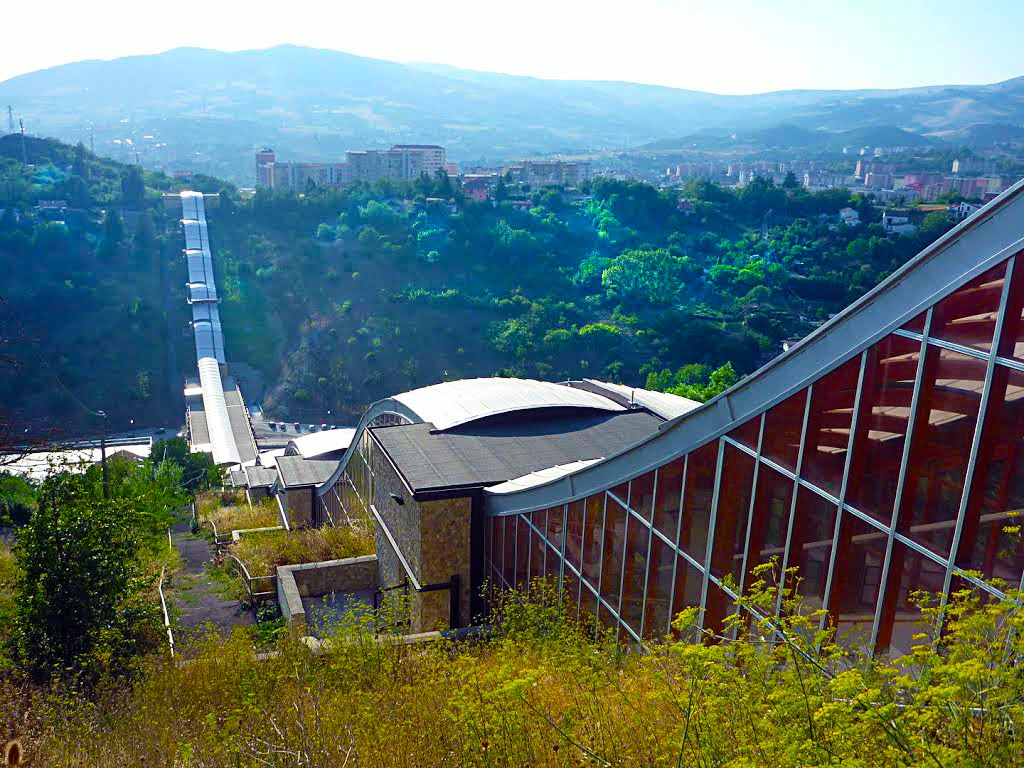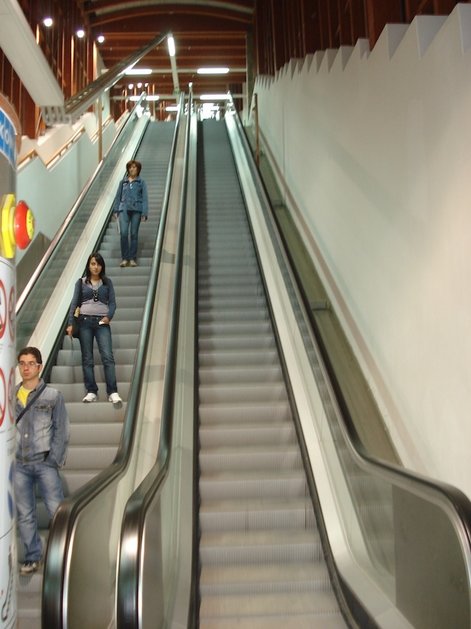|
Basilicata is a hilly, mountainous region, and its capital, Potenza sits at 2700 feet above sea level--the highest elevation of any regional capital in Italy. It has a medieval historic center on the top of one hill, and a much newer part of the city on another, with a 300 foot dip in between. People need to commute to work from the historic center to the other hill to work in modern government offices, retail outlet stores and even a conservatory of music. Multiple modern apartment towers on that hill also have people commuting the other way around--to the old town.
Vito Santarsiero, who spearheaded the project during his 10 years as mayor, has been optimistic that interest will grow as word spreads about Potenza’s attractions. He is no longer the mayor. The Scale Mobile Santa Lucia has been plagued by problems ever since it opened... mechanical breakdowns, cost overruns, lack of use, safety, grafitti, and even "up-skirt" weirdos photographing ladies panties as they rode up the escalators. To me, it seems the whole design has a couple of major flaws. First of all, on the Via Tammone side (the new town), there is only the entrance building for the escalator system. There is nothing there. No parking lot--so people needing to get to the old town have somewhere to park right next to the escalators. It;s not that there isn't space for a public parking lot--there is a hugh grassy field laying empty right there. There is no piazza, no park, no bar or cafe, no where for people to mingle, meet and take in a view of the old historic town on the opposite hill. And even if there was a little piazza with a view, there would be nothing nice to look at. It seems that some time ago, local politicians gave permission to builders (meaning, they were paid off) to erect tall, ugly, modern apartment buildings which blocked the view of the old town. They are built along the edge of the old town right in front of all the historic structures. There is a beautiful bell tower, but you can't see it. There are clay tile roofs, but they too are blocked. Perhaps I tuned in to this because of where I grew up on the Jersey Palisades across from Manhattan on the Hudson River. When I was a kid, crooked politicians sold the citizens a bill of goods about their taxes going down (never happened) as many high rise apartment buildings went up--blocking the view from the older historic homes along the boulevard. Now, when you look back to New Jersey from Manhattan, there are parts of the Palisades that are nearly wall-to-wall high risers. I have never seen this in Italy. More typically, Italians are incredibly proud of their hilltowns and their views. I can't tell you how many wonderful little outdoor spaces I've discovered right at the edge of the hilltop view of a valley below, the sea, or mountains. I've seen large piazzas, tiny vest pocket parks, children's playgrounds, or even just a simple promenade with benches for taking a stroll during the evening passeggiata with your family or friends after dinner. There is nothing substantial on the modern town side of this "escalator system" for several blocks. It's just sort of--there. Now don't get me wrong. I'm a big fan of public mobility projects in Italy, especially helping people get from a low part of a town to the highest parts. There are literally thousands of hilltowns in this mountainous country. In San Gimignano, I welcomed the elevators that took us up--and then back down to the old town from the public parking lot below the historic center. And I'm sure visitors parking below the "Under the Tuscan Sun" hilltown of Cortona appreciate the outdoor escalators that take them from the parking lot up almost 200 feet to the Piazza Garibaldi. The Potenza escalators made some people's pockets fat, but was there really a need for them? --Jerry Finzi |
On AMAZON:
|






 RSS Feed
RSS Feed

